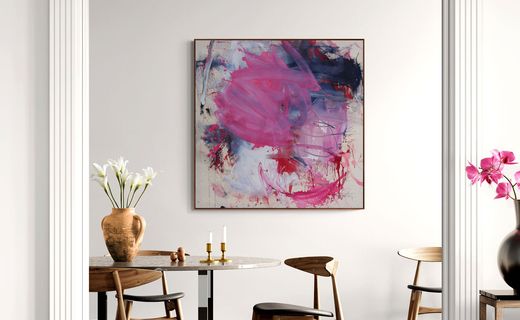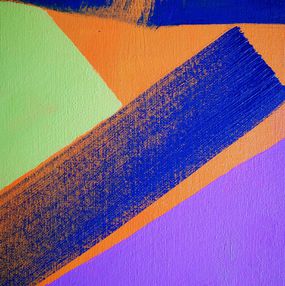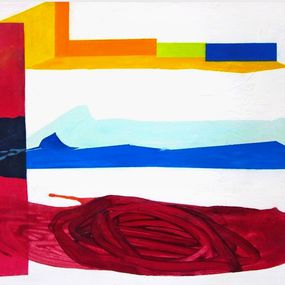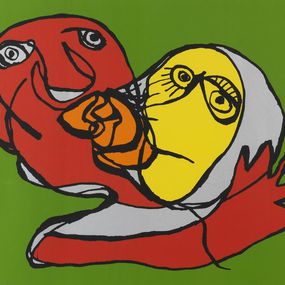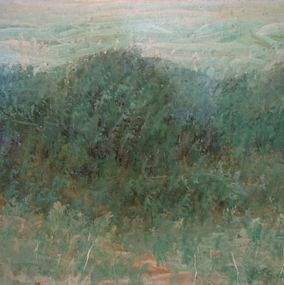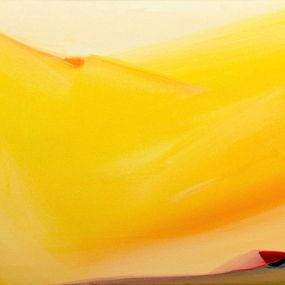
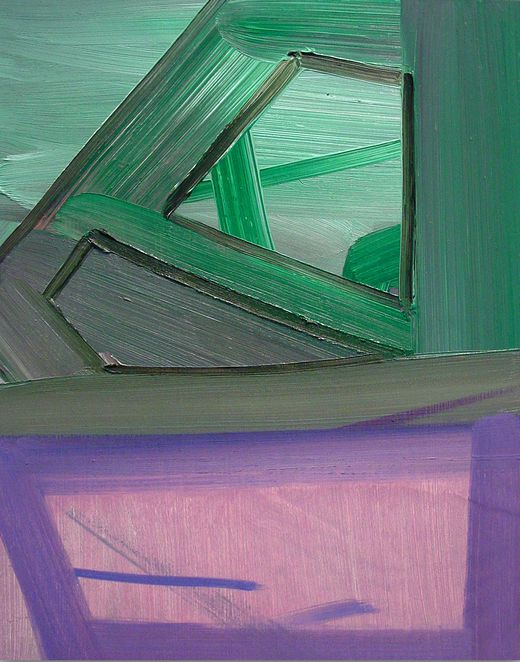
United States
• 1977
Biography
Ashlynn Browning is an American Abstract painter whose work (essentially) intuitive is focused on space and colors. She lives and works in Raleigh, North Carolina, USA. Browning obtained a Barchelor's Degree in plastic arts and in English from the Meredith College of Raleigh (North Carolina, United States) and in 2002, she obtained a Master's Degree in Fine Arts, painting and engraving from the University of North Carolina in Greensboro (North Carolina, USA).
Browning works almost exclusively on paper (until around 2006), using graphite, charcoal, oil pastels and then combining his techniques with paint and collages. Over time, the canvases started to take over the paper, which ended disapearing, so she began to focus almost exclusively on oil painting.
Browning does not plan or does any initial study before starting a painting. Intuition, instinct and accidents are the main engine of her work. She approaches painting with a Classic Abstract Expressionism style : making a mark, responding to this mark and so on. The only "calculated" part of her work is when she lets a layer of paint sit for a while and watches it for several days, thinking about the next step. This calculated choice may or may not remain in the final product, but that is an important part of the process. At the end, the painting is an accumulation of deliberate decisions and purely instinctive acts.
Even if Browning's paintings are intuitive and are mainly focused on the painting itself, we can also find his own experiences and the human psyche in general.
His recurrent use of grids, networks and since 2013, of stacked shapes, resemble architectural structures, but these are created intuitively in response to the painting in progress.
The colors, which play a very important role in Browning's paintings, also vary according to his feelings or interests of the moment (nature, fashion or historical artistic preferences). However, in the practice, he rarely uses primary colors, and he almost always use a little rose Guston in his pièces.
In an article published in Burnaway in 2015, Shana Dumont Garr, art historian, curator, writer, and gallery owner, said after a visit to Browning's studio:
On his website, Browning has this quote from Francis Bacon: "Man is tired of himself. Man is obsessed with himself. I would like to capture one day, a moment of life in all its violence, its full beauty. That will be the perfect painting." This desire for disconnected emotion is reflected in his paintings like Cantilever. Browning's exacerbated sensibility to colors allows an incredible range of shapes and textures to coexist.
Ashlynn Browining has exhibited her work in solo and group exhibitions in the United States, mainly on the East Coast.
Read more
Browning works almost exclusively on paper (until around 2006), using graphite, charcoal, oil pastels and then combining his techniques with paint and collages. Over time, the canvases started to take over the paper, which ended disapearing, so she began to focus almost exclusively on oil painting.
Browning does not plan or does any initial study before starting a painting. Intuition, instinct and accidents are the main engine of her work. She approaches painting with a Classic Abstract Expressionism style : making a mark, responding to this mark and so on. The only "calculated" part of her work is when she lets a layer of paint sit for a while and watches it for several days, thinking about the next step. This calculated choice may or may not remain in the final product, but that is an important part of the process. At the end, the painting is an accumulation of deliberate decisions and purely instinctive acts.
Even if Browning's paintings are intuitive and are mainly focused on the painting itself, we can also find his own experiences and the human psyche in general.
His recurrent use of grids, networks and since 2013, of stacked shapes, resemble architectural structures, but these are created intuitively in response to the painting in progress.
The colors, which play a very important role in Browning's paintings, also vary according to his feelings or interests of the moment (nature, fashion or historical artistic preferences). However, in the practice, he rarely uses primary colors, and he almost always use a little rose Guston in his pièces.
In an article published in Burnaway in 2015, Shana Dumont Garr, art historian, curator, writer, and gallery owner, said after a visit to Browning's studio:
On his website, Browning has this quote from Francis Bacon: "Man is tired of himself. Man is obsessed with himself. I would like to capture one day, a moment of life in all its violence, its full beauty. That will be the perfect painting." This desire for disconnected emotion is reflected in his paintings like Cantilever. Browning's exacerbated sensibility to colors allows an incredible range of shapes and textures to coexist.
Ashlynn Browining has exhibited her work in solo and group exhibitions in the United States, mainly on the East Coast.
Exhibitions dedicated to Ashlynn Browning
Discover the movements linked to Ashlynn Browning
Discover similar artists
Discover our selections of works by artists
Need help finding your favorite? Consult our selection pages made for you.








